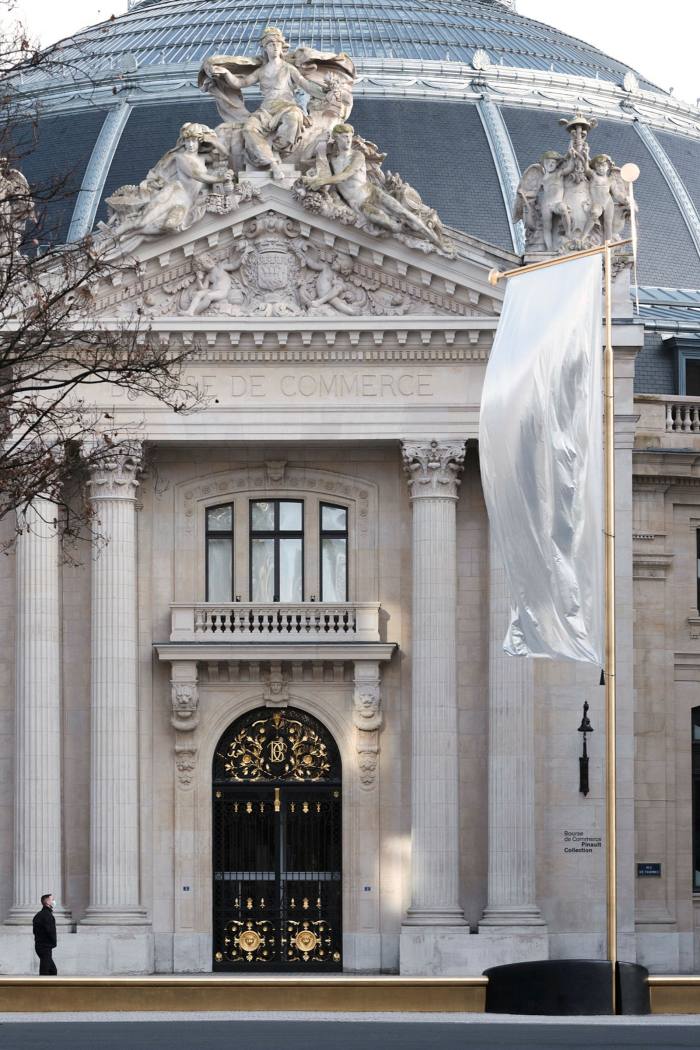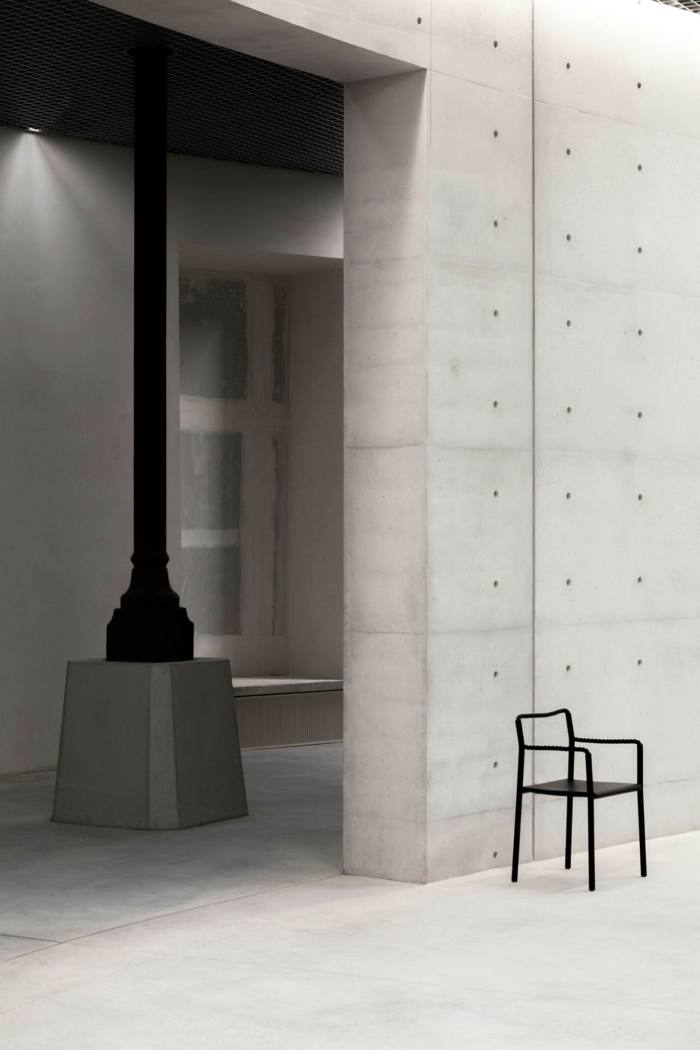
Capitalism, apparently, thrives through competition, and the cultural world is not exempt as an arena. Now Paris, seat of the two figureheads of luxury capitalism, LVMH’s Bernard Arnault and François Pinault of Kering, is witnessing a contest measured through museums.
Arnault opened his Fondation Louis Vuitton in the Bois de Boulogne in 2014, so Pinault also needed a good address. Having abandoned the idea of an island in the Seine (former car plant, too low-rent), he found his venue in the carcass of the city’s old stock exchange, the Bourse de Commerce, situated perfectly between the Louvre and the Pompidou. Arnault had Frank Gehry; Pinault had Tadao Ando, the Japanese architect he had already worked with on two adaptive reuse projects in Venice, the Palazzo Grassi and the Punta della Dogana.
The result opened in May to a more muted and much less global response, given Covid times, than Gehry’s billowing construction seven years earlier. But it is in many ways the more complex and intriguing building.


The big move, one I had reservations about when I saw the model at the Ando exhibition at the Pompidou Centre in 2018, was to build a concrete cylinder inside the historic central rotunda. Entirely useless for hanging art and insanely intrusive, it seemed counterintuitive. But this overscaled sewer pipe executed in impeccable concrete is what brands this as an Ando building. With this one gesture, he takes possession, allowing the rest of the building to be treated more delicately. It is oddly ingenious.
During the design phase, Ando reminisced about a visit he made to the Pantheon in Rome four decades ago, a moment when he was alone, looking up at the oculus as it admitted a disk of light which slowly moved around the walls and revealed the turning of the earth. He suggested it was a moment in which architecture contained and revealed the cosmos. It is a cliché, but that connection with the air and sky is one Ando has made on many occasions, notably in his Church of the Light (Ibaraki, Japan) and Church on the Water (Hokkaido, Japan). In Paris, tip your head up and you may see that beam of light refracted through the iron and glass dome and projected on to the walls, moving slowly round like on a sundial. Here Ando achieves his Roman moment, the connection of the interior to the heavens.


This rotunda embodies a history of change and exchange. The site was occupied in the 16th century by a palace built for Catherine de Medici, then the widow of Henry II. (One freestanding column survives and has been absorbed into the building’s circumference.) In a curious anticipation of the revolutionary shift from royalty to bread, a grain exchange appeared on the site in 1763, a circular building with a courtyard open to the sky.
To protect the grain from rain, a wooden roof was added in 1783, which was later replaced after a fire by François-Joseph Bélanger’s iron version, a wonder of its age. In 1885, the disused building began a transformation into the city’s stock exchange, opening four years later on the centenary of the revolution as one of Paris’s new landmarks, along with the Eiffel Tower. Its rotunda was born again as a trading floor, crowned with a restored iron dome and paintings depicting scenes of exotic colonial riches. It is curious, at this juncture, to see bad 19th-century art depicting colonised peoples in obeisance to their French masters treated with such respect. But these too are apparently an inextricable, sacrosanct component of the building’s history.


There is an argument to be had over exactly how much Ando’s gestural concrete contributes here, whether it can be simultaneously photogenic and contemporary but also banal. Experienced in situ it turns out to be more than just a gesture. The cylindrical wall has a walkway around its exterior which acts not only as circulation for the galleries but as a tool for looking at the historic building it sits in; that beautiful ironwork dome, the art below, the milling crowds and those terrible 19th-century paintings above.
If Ando’s concrete will get the credit here, much of the significant work was done by others. Heritage specialist Pierre-Antoine Gatier co-ordinated the complex restoration while younger local practice NeM (Lucie Niney and Thibault Marca) made it work as an exhibition space. Also present are designer brothers Ronan and Erwan Bouroullec, who have subtly inserted their bespoke furniture and lighting designs into the corners, interstices and stairwells of the structure. The attenuated light poles in the stairwells are, for instance, wonderful — architectural in their presence, understated but elegant.


The real art is installed in a dozen tapering rooms around the edges, each naturally lit and giving glimpses of both cylinder and, occasionally, the city. The galleries are well-scaled for paintings, though they have a kind of blankness to their surfaces which is at odds with the richness of the rest of the building. That globalised banal white combo of the global art interior is, however, countered by the striking nature of the works on the walls. Pinault, whose collection can veer towards the vulgar, has assembled a fine series of works for the opening from an impressively diverse set of artists, much of it representational and figurative, much of it by black artists.
Pinault’s Bourse de Commerce is a project that dates from a moment when Paris was seeking billionaires to fund its next generation of grands projets. There was considerable controversy over the price the city paid to acquire it from Chamber of Commerce and Industry and about whether the luxury magnate should be allowed to take a 50-year lease on such a significant building. But the city of Paris has not had to contribute towards the estimated €160m construction cost and this urban monument is now open and accessible to the public in a way that it has never formerly been.
Although the reception since opening has been largely positive, there has been a discussion, in true Parisian style, about the nature of the institution, its de facto privatisation and the increasing dominance of big business on the cultural landscape. If there is going to be discourse about wealth and inequality, culture and global capitalism, then the Bourse de Commerce — a palace, a temple of commerce, the former stock exchange, a centre of vast colonial exploitation — could well be the ideal place to have it.
Stay connected with us on social media platform for instant update click here to join our Twitter, & Facebook
We are now on Telegram. Click here to join our channel (@TechiUpdate) and stay updated with the latest Technology headlines.
For all the latest Art-Culture News Click Here
